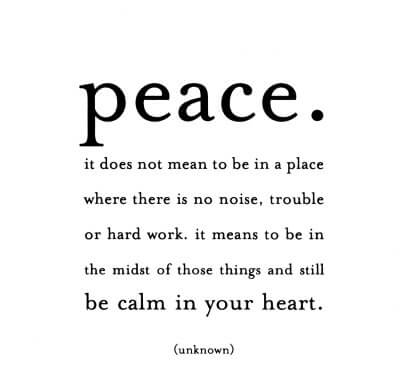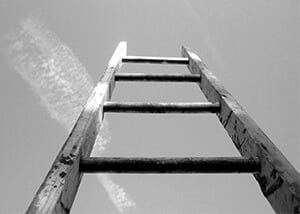There are always two teachers in every yoga class – the teacher, and you. Making sure they are both showing up is the only way to ensure you progress and get the most from your practice.
Assuming your external yoga teacher does a pretty good job of turning up (and if they don’t, it might be time to look for a new one), then how is the internal one doing?
Here are five ways to make sure your internal teacher is showing up to class…
1. Create your own atmosphere
 Candles, incense, aromatherapy oils, soft music … they might help set the tone but they’re not going to make the slightest difference if you’re having a mental argument with your partner/friend/boss.
Candles, incense, aromatherapy oils, soft music … they might help set the tone but they’re not going to make the slightest difference if you’re having a mental argument with your partner/friend/boss.
It is your job to set the internal atmosphere. Of course, the external atmosphere is important and helps you create the internal – I love candles and incense and a good sunset yoga session as much as the next yogi – but put too much emphasis on it, even come to rely on it, and you will run into trouble.
One day the room will be too hot, the beautiful birds singing outside might be joined by a crow, the person next to you might be a little too close or a little too enthusiastic with their ujjayi breath.
 The list is limitless and it isn’t something you have a great deal of control over, so shift the focus to making sure you are taking control of your area of responsibility. Get some inner candlelight on the go by softening any harsh thoughts and sweeten them up with some inner incense.
The list is limitless and it isn’t something you have a great deal of control over, so shift the focus to making sure you are taking control of your area of responsibility. Get some inner candlelight on the go by softening any harsh thoughts and sweeten them up with some inner incense.
Become a master at setting your own atmosphere and the quality of your practice will not be overly reliant on the presence of a scented candle or the absence of a tuneless crow.
2. Learn from everyone
At the moment I’m getting through some yoga teachers, mainly through circumstance (I’m travelling) partly through choice (to experience different styles). Of course there are lots of benefits to trying different teachers but you do occasionally find yourself in a class that really isn’t to your liking.
Maybe the teacher doesn’t seem to care about alignment, maybe they haven’t even mentioned the breath, maybe they keep banging the floor and rolling around and chanting and panting and everybody is confused and embarrassed. It doesn’t matter how ‘bad’ they seem to be, they will have something to teach you.
 Of course this doesn’t mean sticking with a teacher you don’t like (and it certainly doesn’t mean putting yourself at risk of injury) it just means trying not to completely write off the class while you’re still in it. Shift your focus from how terrible it is and look for something you didn’t know, something you can learn.
Of course this doesn’t mean sticking with a teacher you don’t like (and it certainly doesn’t mean putting yourself at risk of injury) it just means trying not to completely write off the class while you’re still in it. Shift your focus from how terrible it is and look for something you didn’t know, something you can learn.
That army sergeant teacher who is barking orders about your alignment, stressing you out and completely killing your yoga buzz? That teacher is making sure your yoga buzz will be able to continue long into the future, injury free. That teacher is also giving you far better body awareness, making sure you have razor-sharp concentration and challenging you to keep your yoga calm even when someone is barking at you.
It is your inner teacher’s job to make sure that expectations and negativity don’t become barriers to learning. It should make sure you are open to learning all the time, especially when it comes to the lessons you don’t want to learn, because they are often the ones you need the most.
3. Feel your way

‘Do you think you’re straight?’
‘Well… I think so’
‘Feel where your body is – is your pelvis in line with your shoulders’
‘Well I don’t know, you can see it!’
I think any newbie to yoga has felt that complete bemusement over a teacher asking them if they think they are in alignment. Perhaps not when simply standing (although it turns out even that is not so simple) but certainly whilst wobbling about in disorientating poses like extended side angle pose. With the physical exertion of being in the pose and your head pointing up to the ceiling it seems ridiculous that they would expect you to know where your body is in space.
But then you realise just how ridiculous it is that we don’t know where our bodies are in space. Surely that is something we should know – we are in them our whole lives. But no, our mind overactivity means our body sensitivity is dulled and in our day-to-day lives we generally only notice body parts when they scream at us.
Developing a greater awareness and sensitivity to your body is something that your external teacher will encourage, but it is something only your inner teacher can really engage with – especially at the more subtle levels.
The inner teacher should be paying close attention to what is happening in each pose, how it feels, and if the teacher corrects you, it should be really feeling what they are correcting, which parts of your body are opening, twisting, working, being released?
4. Watch your mouth
 Watch that inner voice. We all have one and it’s normally allowed to run riot. Under no circumstances should it be commenting disparagingly on your huge thighs, your inflexible hips, your sweat patches or the fact that you’re shaking so much in plank it looks like you’re trying to drill for oil.
Watch that inner voice. We all have one and it’s normally allowed to run riot. Under no circumstances should it be commenting disparagingly on your huge thighs, your inflexible hips, your sweat patches or the fact that you’re shaking so much in plank it looks like you’re trying to drill for oil.
Has your external yoga teacher ever spoken to you like that? No (I hope), then nor should your internal.
Gaining awareness of how your inner yoga teacher talks will help you no end in your practice. If you’re sweating and shaking then endless comments about this will only serve to increase the sweating and shaking.
5. Climb the ladder
 This is the seam that runs through all the above. It is about staying aware and looking at things from a more rounded and less reactive perspective.
This is the seam that runs through all the above. It is about staying aware and looking at things from a more rounded and less reactive perspective.
An external teacher can teach you effectively because they are coming from a higher perspective. Not only is it a perspective that has the benefit of greater knowledge, it is also a perspective of an outsider, someone who isn’t caught up in reacting to a situation, so they can see what the most helpful course of action is.
They can see which poses are needed to really move you forward. They see when your competitive streak needs cooling with some passive poses, or you need to work on courage with some fearless poses. They can also see when you are being lazy and need a gentle push, or when you’re struggling and could use some support.
It is entirely possible for your inner teacher to see this too. By being more aware of your thoughts, your reactions, your body – by being less reactive, more reflective and asking ‘what’s helpful, what’s needed?’ instead of ‘I like, I don’t like, I want, I don’t want’, you can move yourself forward in your practice more smoothly and skillfully.
And the benefit of all this? Anyone who has taken part in a yoga class where all the teachers were present – the external and the internal – will know that the energy is quite simply off the scale. The learning, support and growth, and the excitement and energy that all this generates, is palpable. Leaving those classes everybody is on a high. You say a heartfelt ‘namaste’ and ‘thank you’ to your teacher and head back out into the world with your inner teacher more present than ever.
| About the author |
 Cat Easterbrook came on holiday to Azul Yoga & Pilates Retreat and never left, finding a home on this beautiful island and working alongside the wonderful, spirited, talented, nurturing people at Azul (her, rather biased, words). She is currently travelling in India and Nepal, studying yoga and meditation, and learning to keep her yoga calm amongst the honking horns, holy cows and cheeky monkeys. |